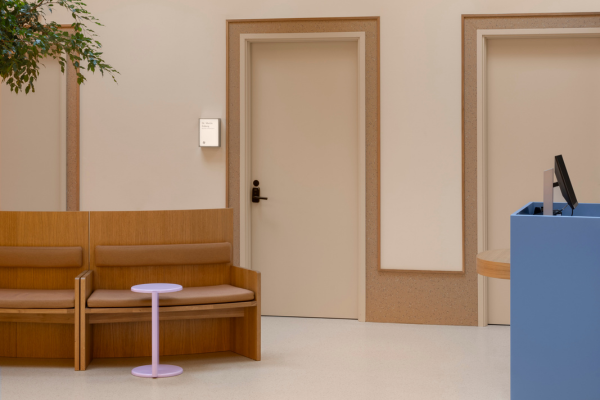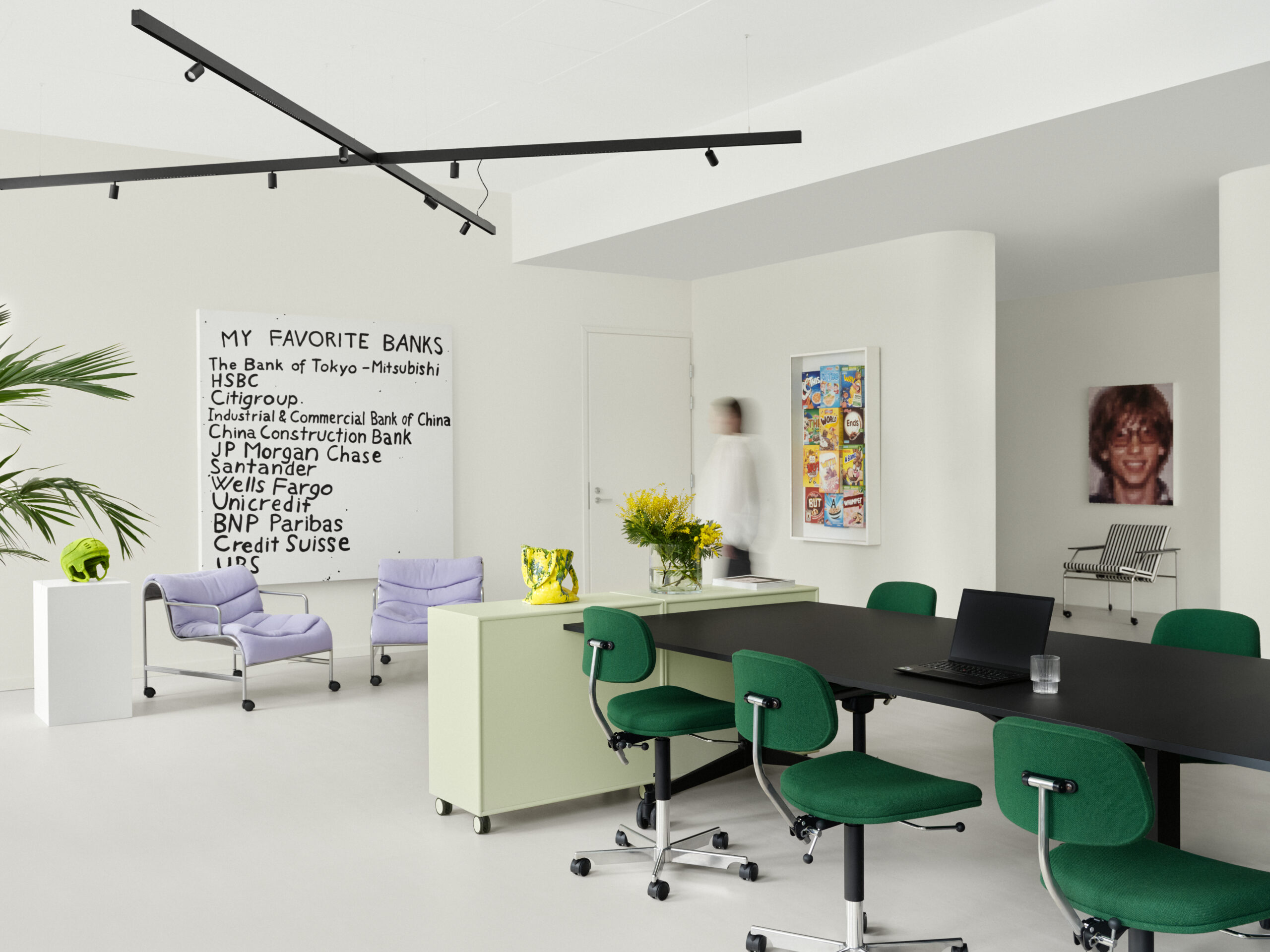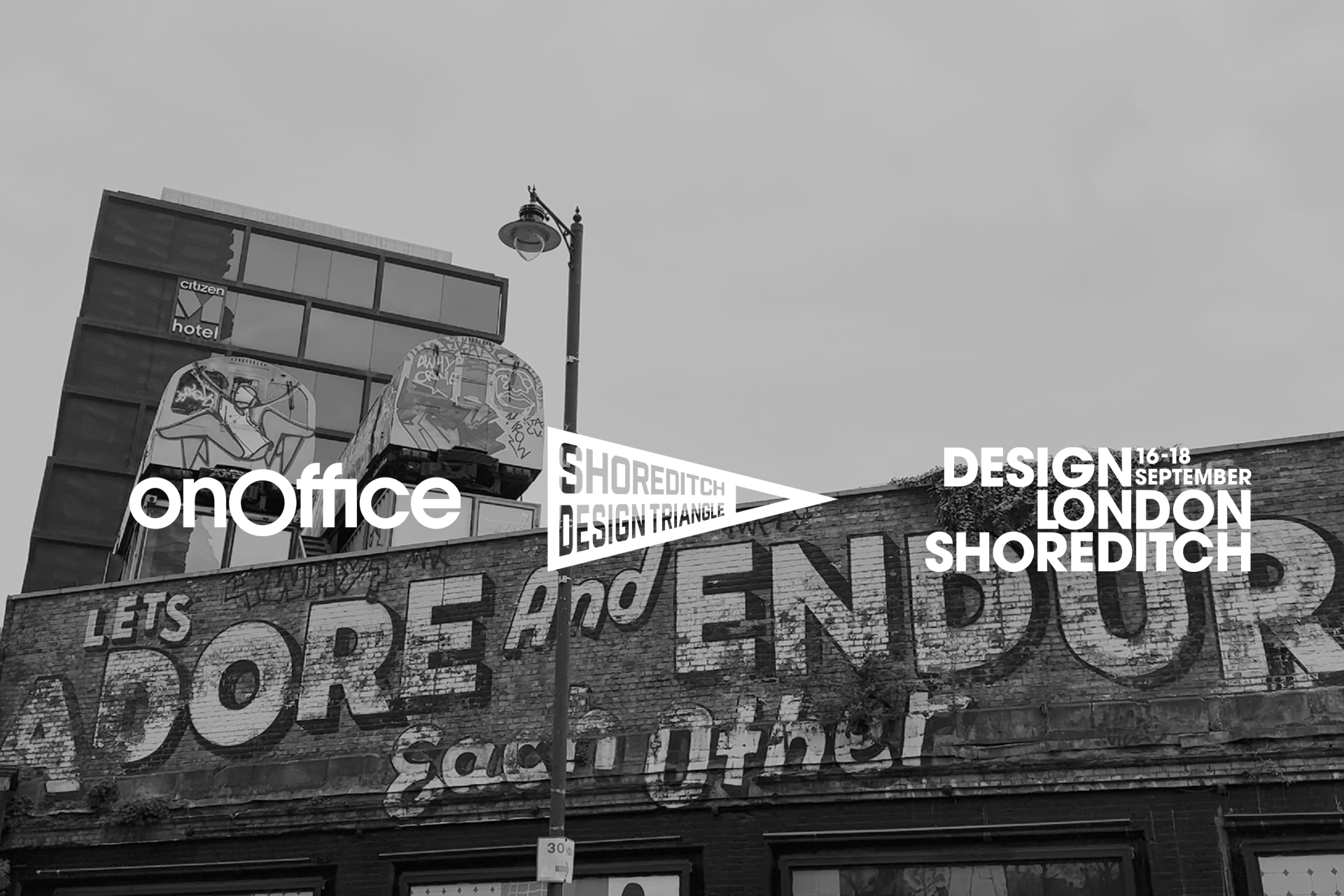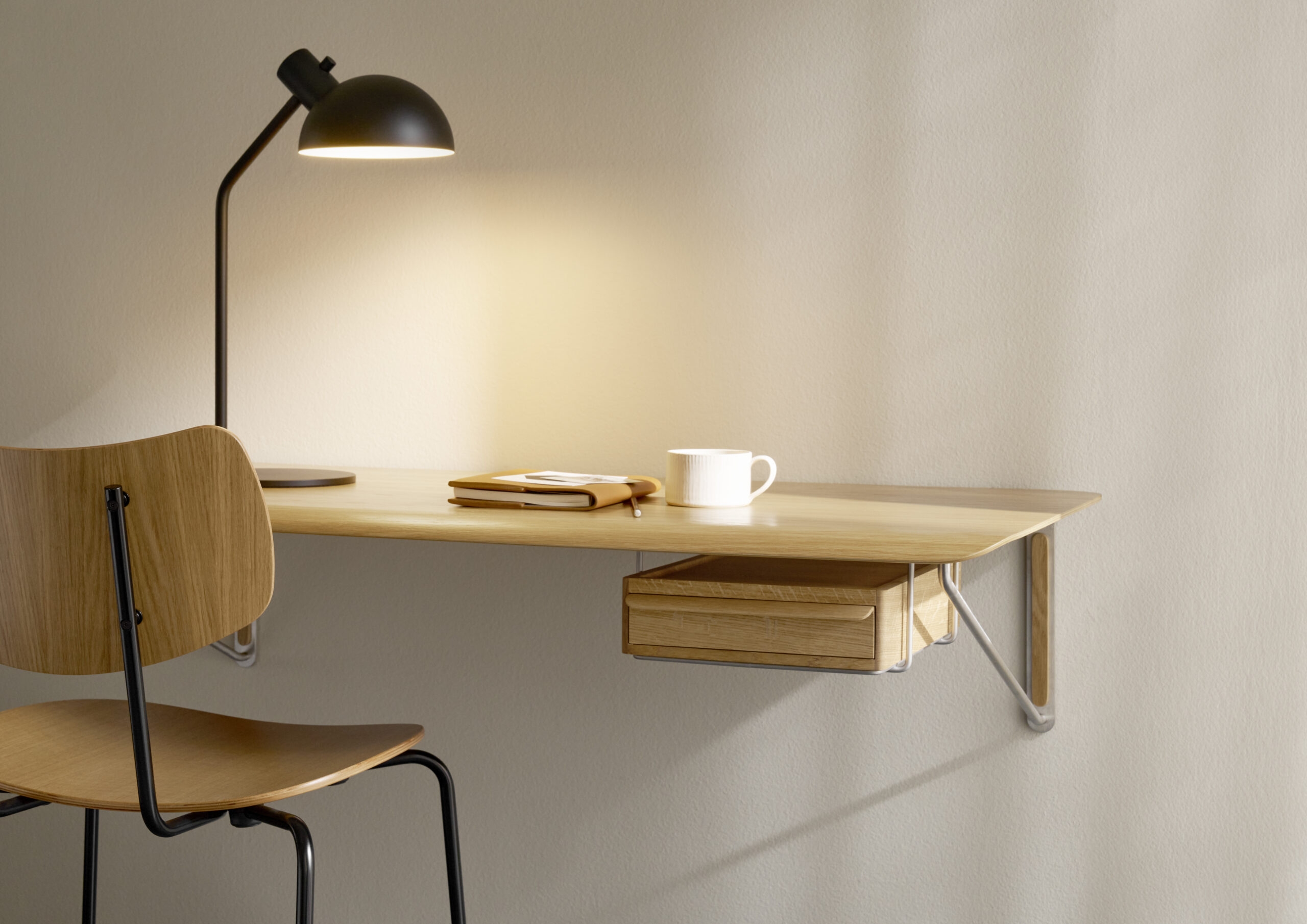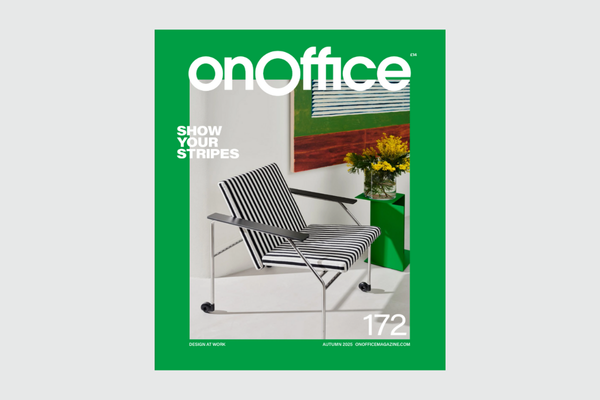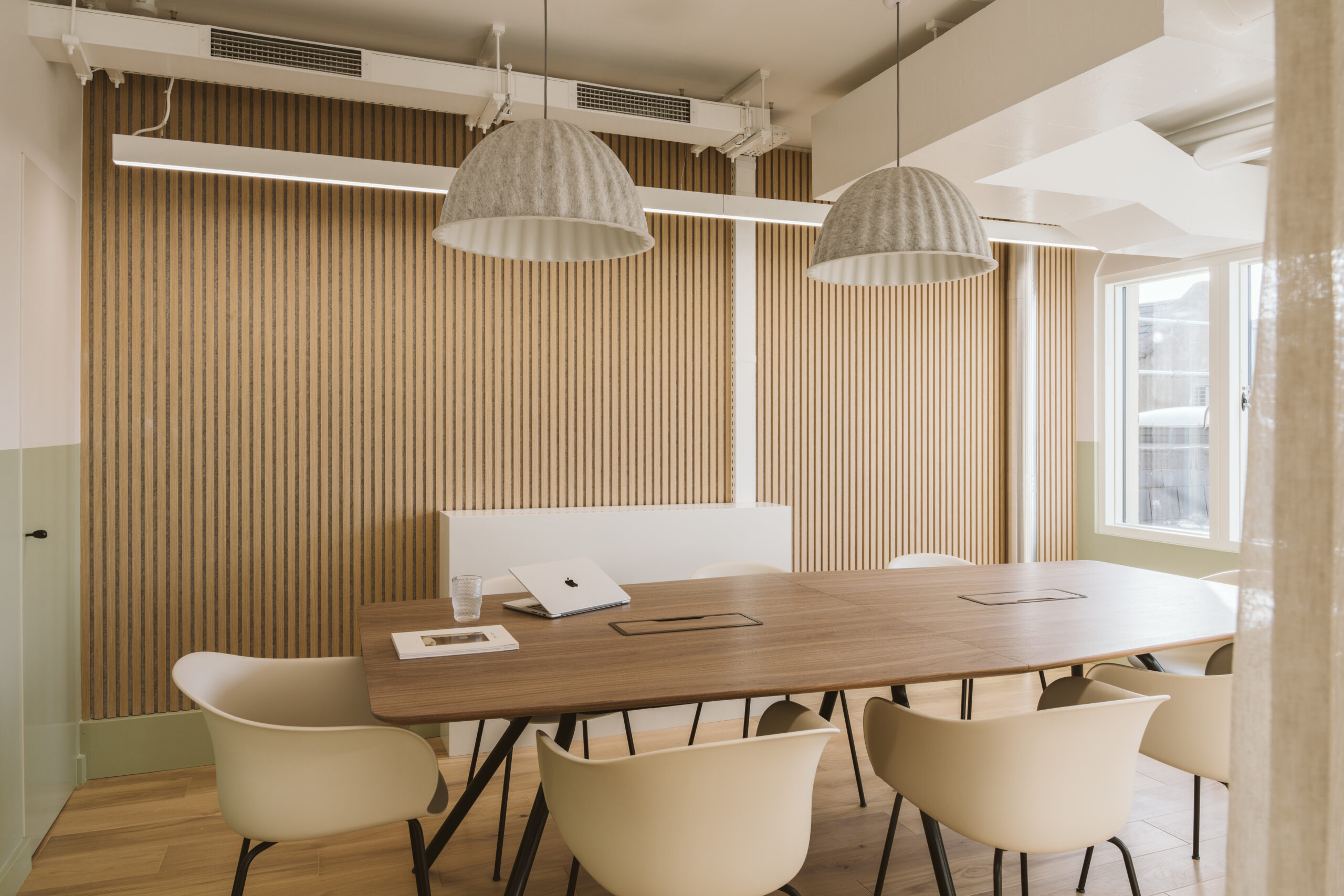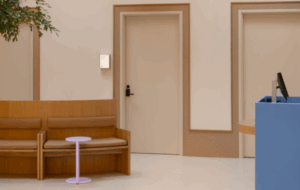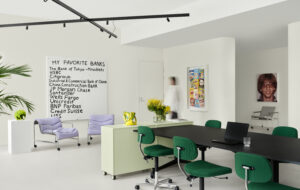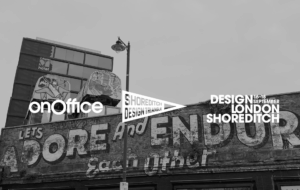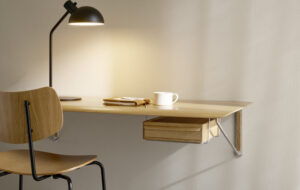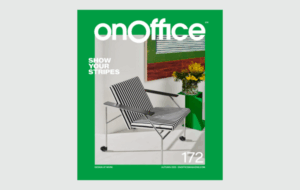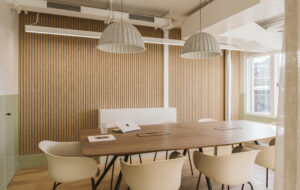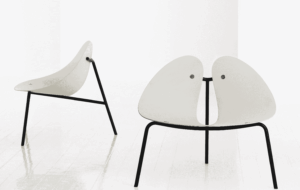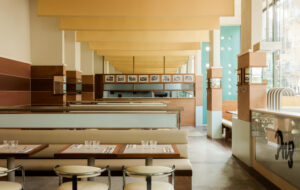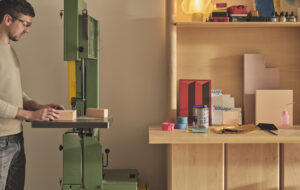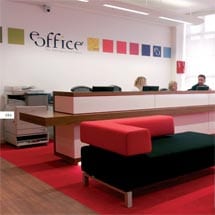
 Words by Monique Nelson
Words by Monique Nelson
eOffice in Birmingham is the latest in a series of serviced workspaces for hire, fitted out by London-based design practice Assemblyroom. Monique Nelson reports
Imagine you have recently started your own business and, in need of a city centre address, you seek out some office space. Or perhaps your company requires a number of satellite offices in various major cities. Imagine you want a serviced office, with conference and meeting facilities and out-of-hours access. Would you rather work in a closed environment where you don’t know your neighbour or an open atmosphere with designer furniture and a mix of businesses to interact with?
The first eOffice opened about five years ago in Soho, central London, and success has brought the concept to Manchester, Birmingham and Bristol. I met with eOffice CEO Pier Paolo Mucelli and his architect Peter Wall of Assemblyroom to discuss eOffice Birmingham.
“eOffice is a provider of readymade offices and meeting and conference facilities, combining a very contemporary environment with the latest technology; and providing flexible office solutions primarily to the SME market,” explains Mucelli, soon after we’ve taken our seats in one of the interview rooms. Clients are able to rent desk space whether as individuals or small businesses and come and go as they please from 8am to 6.30pm, Monday to Friday. Full time members have key cards for access outside of office hours.
Assemblyroom’s concept has developed as each office is approached, says Wall: “Although the office is quite bright and visual, we’ve kept the palette minimal. We probably use three to four finishes and try to stick to that where possible. It creates control within the space, it doesn’t make it cluttered, and it’s quite calm.” In terms of office layout, services were added as the team learnt lessons about the market: “Soho was the original one (designed by Squaredot), so it was the first attempt at seeing how it would work. It’s very successful,” says Wall. “From that we went to Manchester. Because outside London it’s a slightly different market we were unaware of how it was going to work; the cellular element came in to link the space. So we introduced a third as open plan, a third as cellular, a third as offices and also the conference facility. I think Pier had done his market research, looked around and realised there was an opportunity there as well.” The market for cellular offices extended from Manchester to Birmingham, where they border the workspace.
“Location is quite key to the eOffice philosophy,” adds Wall. “It’s city centre, close to infrastructure – a train station, shops, bars, restaurants – and it’s normally ground or first floor so it has some kind of presence value, a connection with the street.”
eOffice Birmingham is situated near New Street station and the Bullring on the ground floor of a renovated Grade A building. Structural work was carried out by Workspace Design and Build (whose Midlands base is in the same building), working around the restrictions of the space, adding flooring and lighting to suit the rooms.
The spacious reception lounge is filled with light, as a large wall of windows stands adjacent to the main desk and lounge seating. Assemblyroom endeavours to keep a relationship with the immediate neighbourhood in each eOffice, to which end the firm employed graphic designer Ed Ashley-Carter to capture key features of the locale and distort the images to apply to interior walls; thus the shopping centre bull stares at you in the reception lounge and also in the boardroom. The coloured-square company branding is also highly visible, though not in an ostentatious way – across the wall behind the reception, in the artwork and Nava wall clocks, and on the frosted meeting room doors numbered “e.1”, “e.2” and so on.
“I think the attention to detail is quite unique,” Wall says. “We like to think it is kind of like a hotel – somebody leaves a chocolate on your pillow, folds your towel.” For example, meeting rooms are equipped with phone and audio conferencing materials, flipchart and pens, TV screen, WiFi and drinks – “good coffee, good tea, great water,” says Wall. “Illy coffee,” Mucelli hastens to add.
“You feel like you’re being looked after. I don’t think any other service office offers that,” says Mucelli. You are also well looked after as a virtual office client. The set up is such that as well as having a central business address, dedicated phone number, answering service and mail forwarding, virtual office clients are able to pay as they go for further services, such as a hotdesk. A team of four customer care managers all work from the large reception desk, meeting and greeting and managing conference and meeting facilities.
Wall knows Mucelli from his time as a contractor for Squaredot and says the Italian entrepreneur is “very passionate about design and understands the importance of it within an office.” Design is all over this office: Mucelli handed me the most recent edition of onoffice as I arrived, I’m sitting in front of piles of international design magazines and as we three stroll around the space he tells me about the custom-made aquariums, the pair of mannequins decorated by a make-up artist and the limited-edition silhouette mirrors by Afroditi Krassa. I had thought it might be difficult to concentrate in such a visually stimulating environment, surrounded by various types of business and with a flow of new people to meet perhaps weekly, but as I’m led through the carpeted workspaces, people barely move except to see us standing behind them chatting. I can’t say all the desks were occupied, but that is the flexibility of the office – clients come in when they need to use the facilities, whether it is desks, video conferencing, meeting rooms or just the broadband connection. Flexibility was also an important factor in furniture choice. Those clients who choose to rent in the open-plan office sit in the centre at Herman Miller Resolve workstations, which include screens that can be lowered for communication or raised for privacy. In the meeting and boardrooms, furniture was specified from Kristalia – stackable chairs and tables on castors. The 100-seat conference room has similar benefits, with an adjoining “ante-room” for uses such as catering for a large conference.
Encouraging networking was part of the plan, Wall explains. “The office breaks down into cellular, open plan, meeting space and conference space. What brings them together is the shared facilities – a reception lounge, tea point and touchdown area, for quick use of equipment like printers – and these are all vehicles for people to mix and network in.” The desks are numbered and mixed, bringing full-time members and transient hotdeskers together, but clients can also network in areas such as the bright yellow shared kitchen located centrally to the office. You don’t know who you’ll end up talking to and perhaps doing business with.
Both Wall and Mucelli acknowledge that trust is an implied factor in renting a space in a serviced office, but Assemblyroom has catered for security, supplying lockers in the lobby and ensuring cell rooms are lockable. However, Mucelli adds, today’s office is essentially mobile: “All the most important things are now portable – your iPod, digital camera, mobile phone and laptop. That’s what you really have to be worried about.” So security is largely up to the client? “Yes: I mean they bring their own computers and their own printers in some cases, quite often actually, and all their documents, but anything to do with furniture is ours and we maintain it.” In five years of operation, Mucelli says, there have been no incidents of property theft, even with the key card scheme, so there is no need for additional security on site.
The success of eOffice is shown in the figures, clients and expansion. Large blue-chip companies are hiring the conference facilities – Marks & Spencer, Puma and Ticketmaster have all been in – the facilities are booked for some time to come and further opportunities for growth are sought after. Mucelli feels confident that if more eOffices were opened, the people would come.

